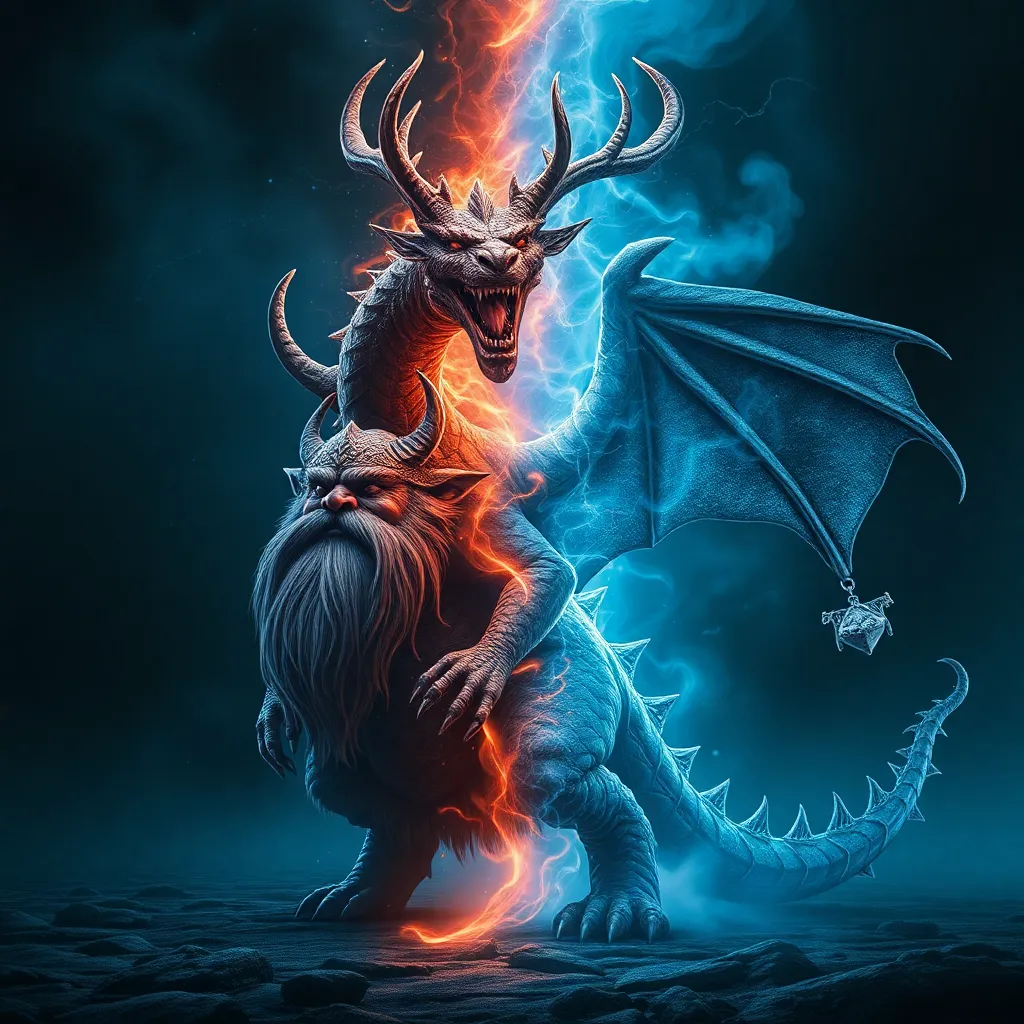Fafnir’s Transformation: From Dwarf to Dragon in Norse Legend
I. Introduction
Norse mythology, rich with tales of gods, giants, and heroes, serves as a window into the beliefs and values of the ancient Norse people. Among the myriad characters that populate this complex mythos, Fafnir stands out as a central figure whose transformation from a dwarf to a dragon encapsulates themes of greed, ambition, and fate.
This article delves into the fascinating story of Fafnir, exploring the events leading to his transformation, the implications of his actions, and the lasting legacy of his narrative within Norse mythology.
II. The Origins of Fafnir
Fafnir originally appeared in the Eddas and Sagas as a dwarf, a race known for their exceptional skills in smithing and craftsmanship. In Norse lore, dwarves are often depicted as beings of great power and knowledge, capable of creating magical items and artifacts.
Fafnir was the son of Hreidmar, a powerful dwarf, and had two brothers, Regin and Otter. The family’s fate would be irrevocably altered by the curse of the Rhinegold, a tale that intertwines their destinies and introduces the destructive nature of greed.
III. The Curse of the Rhinegold
The myth of the Rhinegold is pivotal in understanding Fafnir’s transformation. According to the lore, the Rhinegold was a treasure guarded by the water nymphs of the Rhine River. Whoever possessed the gold would have the power to rule the world, but it was also cursed, bringing misfortune and death to those who sought it.
Fafnir’s father, Hreidmar, captured the god Loki after Loki killed Otter, and in compensation, Loki brought the cursed gold to Hreidmar. This gold, rather than bringing prosperity, sowed the seeds of destruction within the family. Driven by greed, Fafnir would eventually betray and kill his father, revealing the corrupting influence of wealth and ambition.
IV. Fafnir’s Descent into Darkness
The pivotal moment in Fafnir’s story occurs when he chooses to murder Hreidmar to claim the cursed gold for himself. This act of fratricide marks a stark turning point in his character, illustrating how the allure of wealth can lead to moral decay.
As Fafnir succumbs to greed, his physical appearance and demeanor change drastically. The gold becomes an obsession, and the lust for power and riches transforms him into a creature of darkness. The implications of this transformation are profound, as they highlight the moral degradation that accompanies unbridled ambition.
V. The Transformation into a Dragon
Fafnir’s metamorphosis into a dragon is steeped in mythological significance. Various interpretations suggest that his change was not merely physical but also symbolic of the internal corruption that greed instilled in him. In many cultures, dragons represent both power and destruction, embodying the consequences of avarice.
The role of magic and curses in Fafnir’s transformation cannot be overstated. The enchantments associated with the Rhinegold curse serve as a catalyst for his change, illustrating a common theme in mythology where characters are transformed as a result of their actions and desires. Fafnir’s transformation serves as a cautionary tale about the dangers of allowing greed to consume one’s soul.
VI. Fafnir as a Dragon: Guardian of Treasure
As a dragon, Fafnir becomes the ultimate guardian of the cursed treasure. He resides in a lair filled with gold, jewels, and other riches, a stark contrast to his former life as a dwarf. The imagery of the dragon hoarding treasure is a powerful symbol in mythology, representing not only wealth but also the isolation and despair that accompany greed.
- Fafnir’s lair is often depicted as a dark and foreboding place, reflecting his corrupted soul.
- His obsession with hoarding gold exemplifies the destructive nature of greed, as he becomes increasingly solitary and monstrous.
The dragon Fafnir embodies the consequences of unchecked ambition, serving as a reminder of the perils of allowing wealth and power to dominate one’s life.
VII. The Heroic Encounter: Sigurd and Fafnir
The narrative reaches a climactic point with the introduction of Sigurd, the hero destined to confront Fafnir. Sigurd’s quest to slay the dragon is not merely a physical battle but a symbolic confrontation between good and evil, heroism and corruption.
As Sigurd embarks on his journey, he is armed with knowledge, weapons, and the guidance of the wise Regin, Fafnir’s brother. The encounter between Sigurd and Fafnir is fraught with tension, representing a clash of values:
- Sigurd embodies courage and honor, seeking to rid the world of the dragon’s malevolence.
- Fafnir, now a dragon, symbolizes the destructive power of greed and the consequences of his choices.
In their battle, Sigurd ultimately slays Fafnir, which serves as a triumph of virtue over vice, illustrating the timeless struggle between light and darkness.
VIII. Conclusion
Fafnir’s legacy in Norse mythology is a powerful exploration of the themes of greed, ambition, and transformation. His story serves as a cautionary tale about the dangers of allowing material desires to corrupt one’s spirit.
The moral lessons derived from Fafnir’s transformation resonate through time, reminding us of the perils that accompany the relentless pursuit of wealth and power. Fafnir’s tale continues to impact modern culture and literature, symbolizing the eternal struggle against the seductive nature of greed and the importance of maintaining one’s moral compass.



